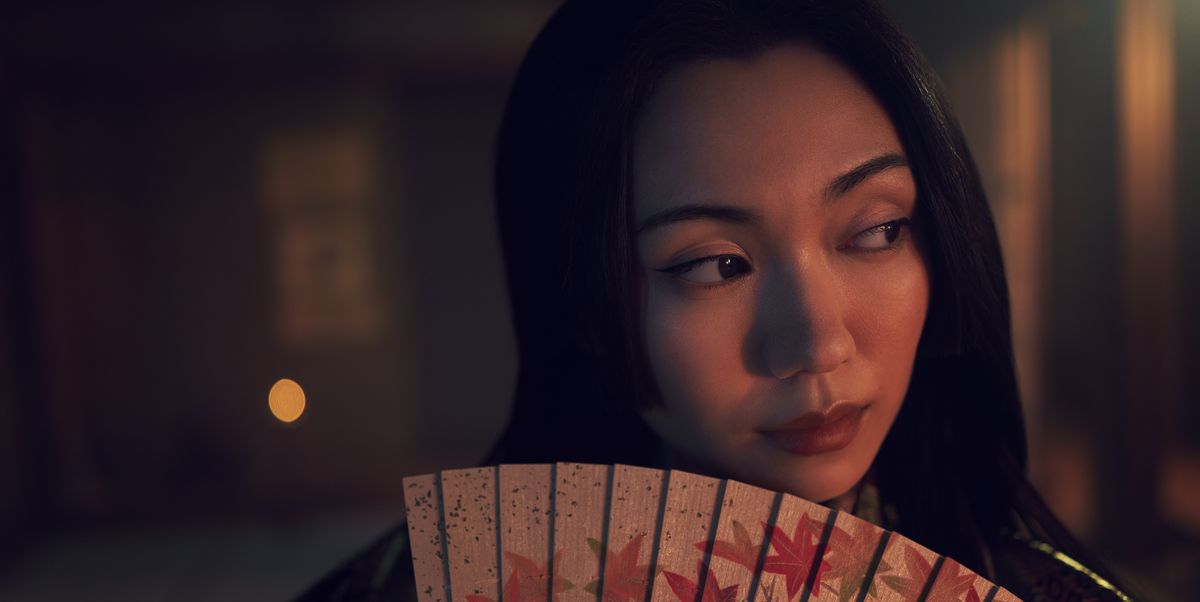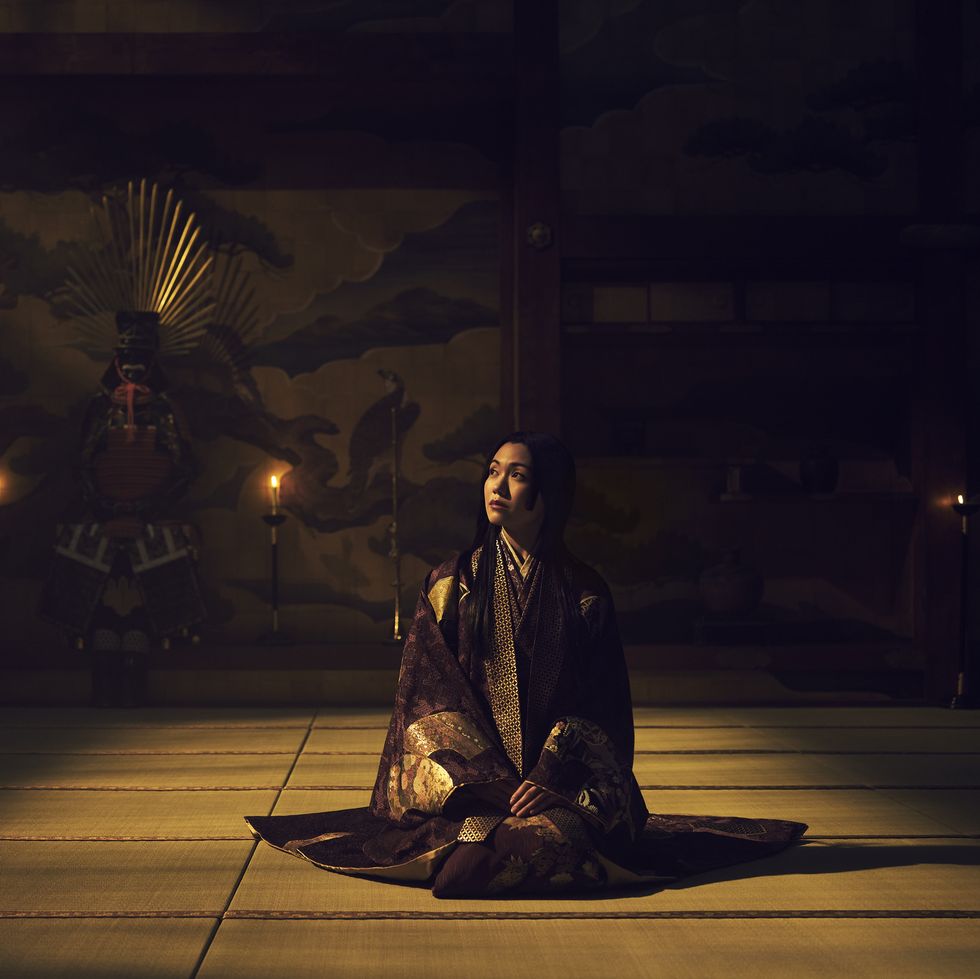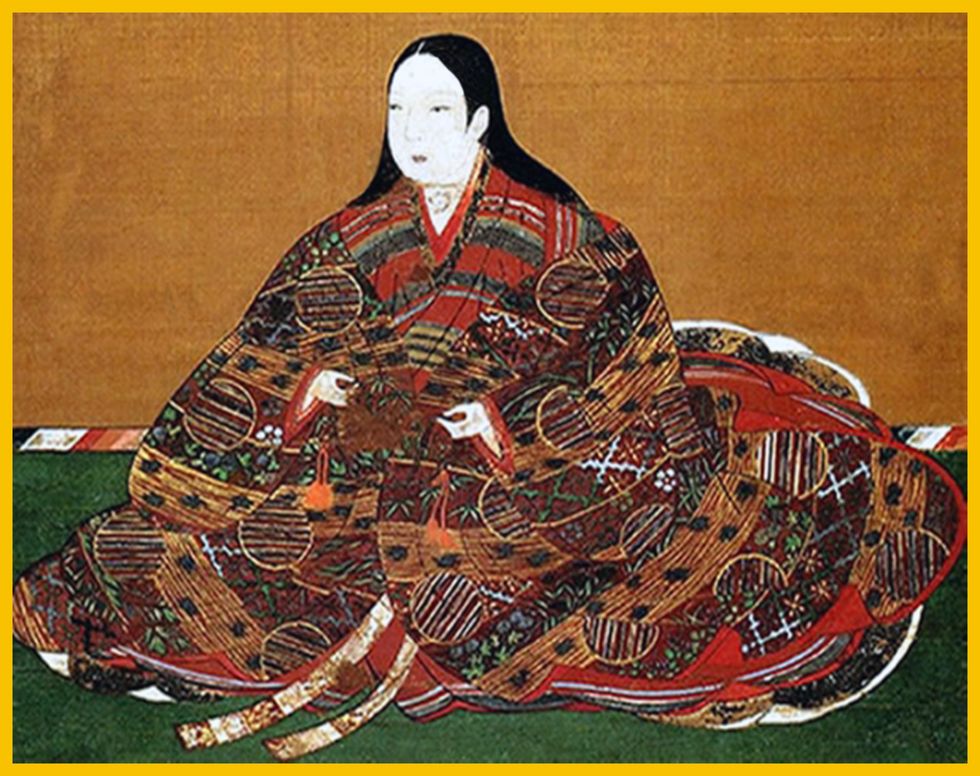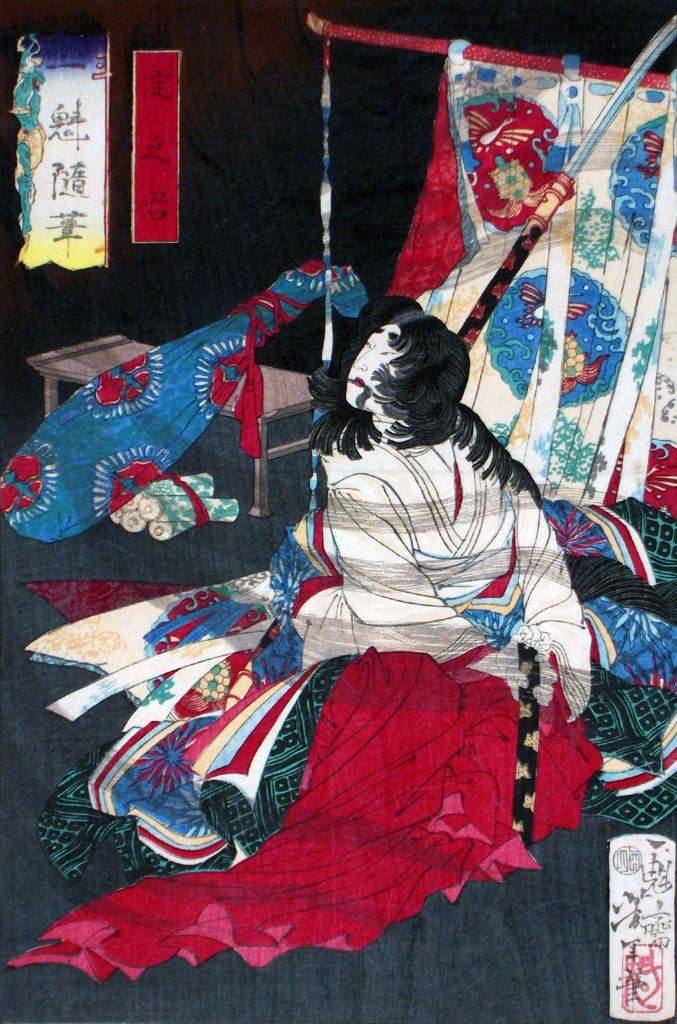Spoilers below.
Episode 6 of Shōgun, “Ladies of the Willow World,” gives us a closer look at the women in this saga and the ways they wield power. The most influential and highest-ranking among them is Ochiba-no-kata, a consort of the late Taikō and mother to his sole heir, Yaechiyo. She begins the series away in Toranaga’s home city of Edo to visit her pregnant sister, but when she returns to Osaka, she’s ready for war. Played with a razor-sharp performance by Fumi Nikaido (Eye Love You, Himizu), she has the regents wrapped around her finger. As she says at the end of in episode 5, “This council answers to me now.”
Lady Ochiba wasn’t always so manipulative, though. As a girl, she was close friends with Mariko, as they would run around the palace grounds and overhear their father’s meetings together. Ochiba, then named Ruri, would even watch Mariko train with her naginata in the courtyard. The two only grew apart when Mariko was married off to Buntaro; her wedding day was presumably the last time they saw each other. Since then, both young women have suffered greatly but have also become more focused on their purpose.
Lady Ochiba is based on the real-life Yodo-no-kata.
Yodo-no-kata (also called Yodo-dono or Yodogimi) was born Azai Chacha, a princess during the Sengoku period, according to Shōgun’s official viewers guide. She was the daughter of warlord Azai Nagamasa and Oichi-no-kata, the younger sister of Oda Nobunaga, known as one of the great unifiers of Japan.
Her father committed seppuku, ritual suicide, when his side lost in battle against Nobunaga. (She would later have the Yogen-in Temple built to honor of her late father. It still stands today in Kyoto.) Chacha, her sisters, and mother then lived with Nobunaga. He was then killed in a betrayal by Akechi Mitsuhide at Honnōji Temple in 1582.
In Shōgun, Nobunaga is known as Kuroda, who was slain by Akechi Jinsai, Mariko’s father. Think of the layers here: Essentially, Mariko’s dad killed Ochiba’s dad. To make matters worse, Ochiba also distrusts Mariko’s lord, Toranaga, claiming he’s the one who secretly planned the murder. No wonder she’s pressuring the Council of Regents to get rid of him.
In actual history, some time after Nobunaga’s death, Chacha became a concubine for Toyotomi Hideyoshi in 1588, per the viewer’s guide. (Like Ochiba and the Taikō in the series.) It was during that time her name changed to Yodo-no-kata. She was the only one able to bear children with him, and they welcomed two sons. The first died at a young age, but the second, Hideyori, became his father’s heir.
Like the Taikō in Shōgun, Hideyoshi died in 1598 when his surviving son was very young, leaving Lady Yodo as his guardian—with immense political influence at her disposal. However, with Hideyoshi gone, the Toyotomi family was dwindling and started to lose influence. (There were even rumors circling at the time, and still speculated today, that Hideyori was not his father’s biological son.)
Lady Yodo was portrayed as the leading role in many kabuki plays, according to Scholten Japanese Art. (In Shōgun, her love story with the Taikō is depicted in a noh performance.) She’s said to be portrayed as entitled and even deranged due to her power. Ochiba in Shōgun is a less extreme portrayal, but still shows her as ruthless and demanding. Case in point: To survive the many “unmentionable things” she endured to conceive the Taikō’s sole heir, she said she forced “fate to look at me so I could scratch out its eyes.”
She clashed with Tokugawa (Toranaga’s equivalent).
Just as Ochiba opposes Toranaga in Shōgun, Lady Yodo resisted Tokugawa Ieyasu (the historical model for Toranaga’s character), especially after he was named shōgun by the emperor in 1603. Their houses were joined, however, when her son, Hideyori, married Tokugawa’s granddaughter, Princess Senhime.
But as Tokugawa rose to power after Hideyoshi’s death, the presence of Hideyoshi’s heir threatened the legitimacy of his rule. In 1614, after most of Hideyori’s supporters had died, Tokugawa’s forces attacked Hideyori at Osaka Castle, but it proved to be impregnable. Hideyori had also managed to recruit hundreds of ronin, masterless samurai, to fight for his cause. When Tokugawa’s army bombed the palace’s private apartments, barely missing Hideyori and Lady Yodo, both sides met for peace negotiations, which she participated in, according to Warfare History Network.
Months later, in 1615, Tokugawa broke the truce and attacked again, successfully this time. With their tower up in flames, Lady Yodo and Hideyori committed seppuku to avoid capture. This marked the end of the Toyotomi lineage; Tokugawa apparently even executed Hideyori’s son, his own grandson, to make sure of it.
A wood block print by Tsukioka Yoshitoshi depicts her moments before her death.



